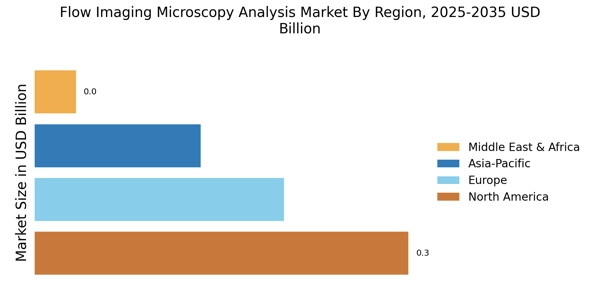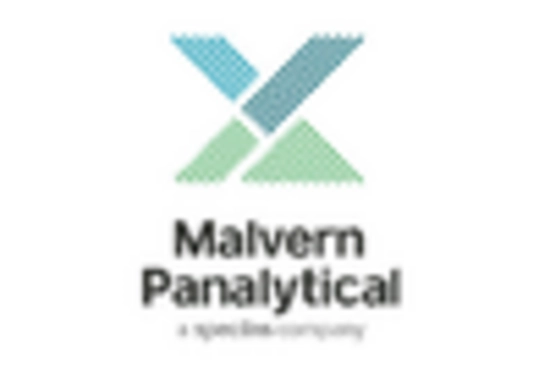Emergence of Nanotechnology
The emergence of nanotechnology is significantly influencing the Flow Imaging Microscopy Analysis Market. As nanomaterials gain traction across various sectors, including pharmaceuticals and materials science, the need for precise characterization techniques becomes increasingly critical. Flow imaging microscopy offers unparalleled capabilities in analyzing nanoparticles, providing essential data on size, shape, and distribution. This is particularly relevant as the nanotechnology market is expected to grow at a CAGR of 15% over the next five years. The ability to accurately assess nanomaterials positions flow imaging microscopy as a vital tool in research and development, thereby driving the demand within the Flow Imaging Microscopy Analysis Market.
Rising Demand for Biopharmaceuticals
The increasing demand for biopharmaceuticals is a pivotal driver for the Flow Imaging Microscopy Analysis Market. As the biopharmaceutical sector expands, the need for advanced analytical techniques to ensure product quality and efficacy becomes paramount. Flow imaging microscopy provides critical insights into the morphology and size distribution of biopharmaceutical particles, which is essential for regulatory compliance. According to recent data, the biopharmaceutical market is projected to reach USD 500 billion by 2026, necessitating robust analytical solutions. This trend underscores the importance of flow imaging microscopy in maintaining the integrity of biopharmaceutical products, thereby propelling the growth of the Flow Imaging Microscopy Analysis Market.
Growing Focus on Personalized Medicine
The growing focus on personalized medicine is emerging as a significant driver for the Flow Imaging Microscopy Analysis Market. As healthcare shifts towards tailored treatment approaches, the demand for precise characterization of therapeutic agents increases. Flow imaging microscopy plays a vital role in analyzing the physical properties of drug formulations, ensuring that they meet the specific needs of individual patients. The personalized medicine market is projected to grow at a CAGR of 11% over the next five years, highlighting the need for advanced analytical techniques. This trend positions flow imaging microscopy as an essential tool in the development of personalized therapies, thereby enhancing its relevance in the Flow Imaging Microscopy Analysis Market.
Regulatory Compliance and Quality Assurance
Regulatory compliance and quality assurance are fundamental drivers for the Flow Imaging Microscopy Analysis Market. As industries face stringent regulations regarding product safety and efficacy, the demand for reliable analytical methods intensifies. Flow imaging microscopy serves as a critical tool in ensuring that products meet regulatory standards by providing detailed insights into particle characteristics. The market for regulatory compliance solutions is projected to grow significantly, with an estimated increase of 10% annually. This trend highlights the necessity for advanced analytical techniques, such as flow imaging microscopy, to support quality assurance processes, thereby fostering growth in the Flow Imaging Microscopy Analysis Market.
Increased Research and Development Activities
Increased research and development activities across various sectors are propelling the Flow Imaging Microscopy Analysis Market. As organizations invest in innovative solutions and product development, the need for sophisticated analytical tools becomes evident. Flow imaging microscopy enables researchers to gain valuable insights into particle behavior and characteristics, which is crucial for advancing scientific knowledge. The global R&D expenditure is anticipated to reach USD 2 trillion by 2025, indicating a robust investment in research initiatives. This surge in R&D activities underscores the importance of flow imaging microscopy as a key analytical technique, thereby driving its adoption within the Flow Imaging Microscopy Analysis Market.


















Leave a Comment